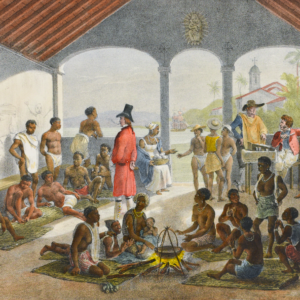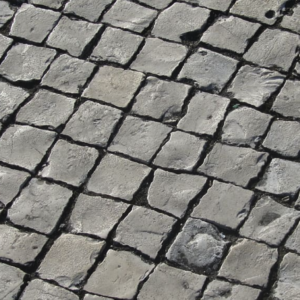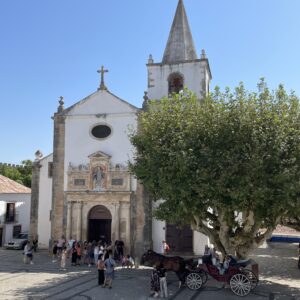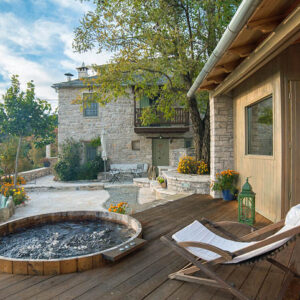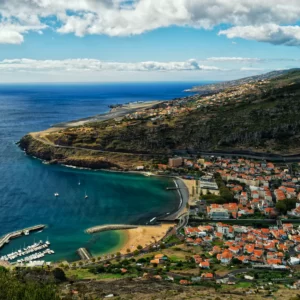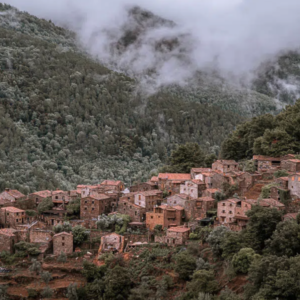Introduction
Overview of Peneda-Geres National Park
Peneda-Geres National Park, located in northern Portugal, is a captivating destination for history enthusiasts. With its rich historical sites, the park offers a unique opportunity to embark on a journey through time. From ancient Roman ruins to medieval castles, visitors can explore the remnants of the region’s fascinating past. The park’s diverse landscapes, including lush forests, cascading waterfalls, and rugged mountains, provide a stunning backdrop for these historical sites. Whether you’re interested in archaeological discoveries or simply want to immerse yourself in the beauty of nature, Peneda-Geres National Park is a must-visit destination for history lovers.
Importance of historical sites
The historical sites in Peneda-Geres National Park hold great importance in preserving the rich cultural heritage of the region. These sites offer a glimpse into the past, allowing visitors to connect with the history and traditions of the area. They serve as a reminder of the people who once inhabited this land and the events that shaped its development. Exploring these historical sites provides a unique opportunity to learn about the diverse civilizations that have left their mark on Peneda-Geres National Park. From ancient ruins to medieval castles, each site tells a story and contributes to the overall narrative of the park’s history. The preservation and conservation of these historical sites are crucial in ensuring that future generations can continue to appreciate and understand the significance of Peneda-Geres National Park’s cultural heritage.
Purpose of the article
The purpose of this article is to explore the historical sites within Peneda-Geres National Park and shed light on their significance. By delving into the rich history of the park, we aim to provide readers with a deeper understanding of the cultural heritage and past civilizations that have shaped this remarkable landscape. Through this exploration, we hope to inspire visitors to appreciate and respect the historical sites within the park and to preserve them for future generations.
Prehistoric Sites

Cave paintings in Vilarinho das Furnas
Cave paintings in Vilarinho das Furnas are a fascinating glimpse into the ancient history of Peneda-Geres National Park. These prehistoric artworks, dating back thousands of years, offer a unique insight into the lives and beliefs of the early inhabitants of the region. The intricate and vibrant designs depict scenes of daily life, hunting, and religious rituals, providing a window into the rich cultural heritage of the area. Exploring these cave paintings is like stepping back in time, allowing visitors to connect with the past and appreciate the artistic prowess of our ancestors.
Dolmen of Mezio
The Dolmen of Mezio is one of the fascinating historical sites in Peneda-Geres National Park. This ancient megalithic structure dates back to the Neolithic period and is believed to have been used as a burial monument. The dolmen consists of large stone slabs that form a chamber, with a capstone on top. It is a testament to the ingenuity and craftsmanship of the people who lived in this region thousands of years ago. Visiting the Dolmen of Mezio allows visitors to step back in time and marvel at the ancient traditions and rituals of the past.
Rock art in Castro Laboreiro
Rock art in Castro Laboreiro is a fascinating glimpse into the ancient history of the Peneda-Geres National Park. This region is known for its rich archaeological heritage, and the rock art in Castro Laboreiro is no exception. The site features intricate carvings and paintings that date back thousands of years, depicting scenes of daily life, animals, and symbols. Exploring this ancient art offers a unique opportunity to connect with the past and gain insights into the lives of the people who once inhabited this area. Visitors to the Peneda-Geres National Park should not miss the chance to visit the rock art in Castro Laboreiro and immerse themselves in the captivating history of this remarkable place.
Roman Influence

Roman bridge in Portela do Homem
The Roman bridge in Portela do Homem is a fascinating historical site located in Peneda-Geres National Park. Built during the Roman Empire, this ancient bridge served as a crucial crossing point over the Homem River. It is a testament to the engineering skills and craftsmanship of the Romans, with its sturdy stone arches and intricate design. Today, the Roman bridge in Portela do Homem stands as a reminder of the rich history and cultural heritage of the region, attracting visitors from around the world who are eager to explore its ancient past.
Ruins of Cividade de Terroso
The Ruins of Cividade de Terroso are a fascinating historical site located within Peneda-Geres National Park. These ancient ruins date back to the Iron Age and provide a glimpse into the lives of the people who once inhabited this area. The site features impressive stone walls, remnants of buildings, and intricate carvings, showcasing the advanced architectural and artistic skills of the ancient civilization. Exploring the ruins allows visitors to immerse themselves in the rich history of the region and imagine what life was like during this time period. It is a must-visit destination for history enthusiasts and those interested in uncovering the secrets of the past.
Villa of Touvedo
The Villa of Touvedo is a fascinating historical site located within Peneda-Geres National Park. This ancient Roman settlement offers a glimpse into the rich history of the region. The ruins of the villa showcase the architectural brilliance of the Romans, with remnants of walls, columns, and mosaic floors. Exploring the site, visitors can imagine what life was like for the inhabitants of Touvedo during the Roman era. The villa’s strategic location near the Minho River and its proximity to other important Roman settlements highlight its significance in the past. A visit to the Villa of Touvedo is a must for history enthusiasts and anyone interested in experiencing the ancient wonders of Peneda-Geres National Park.
Medieval Era

Castle of Lindoso
The Castle of Lindoso is a captivating historical site located in Peneda-Geres National Park. This medieval fortress dates back to the 13th century and offers a glimpse into the region’s rich history. With its imposing stone walls and strategic location on a hilltop, the castle served as a defensive stronghold during various conflicts. Today, visitors can explore the well-preserved ruins and admire the stunning views of the surrounding landscape. The Castle of Lindoso is a must-visit for history enthusiasts and offers a unique opportunity to step back in time.
Monastery of Santa Maria das Júnias
The Monastery of Santa Maria das Júnias is a historical gem located in Peneda-Geres National Park. This ancient monastery dates back to the 9th century and is known for its stunning architecture and rich history. The monastery was once a thriving religious center and played a significant role in the region’s cultural and religious life. Today, visitors can explore the monastery’s impressive ruins and admire the intricate details of its stone carvings. The Monastery of Santa Maria das Júnias is a must-visit site for history enthusiasts and offers a fascinating glimpse into the past.
Village of Soajo
The Village of Soajo is a charming and picturesque village located in the heart of Peneda-Geres National Park. Known for its traditional granite houses with thatched roofs, the village offers a glimpse into the rich history and culture of the region. Walking through the narrow cobblestone streets, visitors can admire the intricate details of the stone houses and the beautiful scenery that surrounds the village. The village is also famous for its espigueiros, traditional stone granaries used to store corn. These unique structures are a testament to the agricultural heritage of the area. Exploring the Village of Soajo is like stepping back in time and experiencing the rural charm of the past.
17th and 18th Century

Baroque churches in Peneda
Peneda-Geres National Park is not only home to stunning natural landscapes, but it is also rich in historical sites. Among these sites, the baroque churches in Peneda are a true testament to the region’s architectural heritage. These churches, with their intricate details and ornate decorations, showcase the craftsmanship and artistic talent of the past. Visiting these baroque churches is like stepping back in time, allowing visitors to appreciate the beauty and grandeur of this architectural style. Each church has its own unique charm and history, making them a must-see for anyone exploring Peneda-Geres National Park.
Solar dos Pimentéis in Castro Laboreiro
Solar dos Pimentéis is a historic building located in Castro Laboreiro, within the Peneda-Geres National Park. This magnificent structure dates back several centuries and is known for its architectural beauty. It served as a residence for the Pimentel family, who were influential figures in the region. The solar features intricate details and a grand facade, showcasing the wealth and status of its former occupants. Today, it stands as a testament to the rich history and cultural heritage of the area, attracting visitors from all over the world.
Manor houses in Lindoso
Lindoso, a picturesque village located in the heart of Peneda-Geres National Park, is known for its stunning manor houses that showcase the rich history of the region. These magnificent structures, with their intricate architectural details and imposing facades, offer a glimpse into the grandeur of the past. Stepping into one of these manor houses is like stepping back in time, as each room is filled with antique furniture, elaborate tapestries, and ornate chandeliers. Visitors can explore the beautifully manicured gardens surrounding the houses, taking in the breathtaking views of the surrounding mountains. The manor houses in Lindoso truly capture the essence of the area’s historical charm and are a must-visit for anyone interested in experiencing the region’s rich heritage.
Modern Era

Industrial heritage in Rio Caldo
Rio Caldo, located within the Peneda-Geres National Park, is home to a rich industrial heritage. The area was once a hub of activity, with numerous factories and mills that played a significant role in the region’s economic development. Today, visitors can explore the remnants of these industrial sites, including old factories, warehouses, and machinery. It is a fascinating glimpse into the past, showcasing the ingenuity and hard work of those who came before us. The industrial heritage in Rio Caldo serves as a reminder of the area’s industrial past and the importance of preserving these historical sites for future generations.
Barragem da Caniçada
The Barragem da Caniçada, also known as the Caniçada Dam, is a significant historical site located in the Peneda-Geres National Park. Built in the 1950s, the dam was constructed for hydroelectric power generation and flood control purposes. It is situated on the Cávado River and has become a popular tourist destination due to its stunning natural surroundings. Visitors can enjoy breathtaking views of the reservoir and the surrounding mountains while exploring the area. Additionally, the dam offers various recreational activities such as boating, fishing, and swimming, making it a perfect spot for outdoor enthusiasts. The Barragem da Caniçada is not only a testament to human engineering but also a place where nature and leisure come together.
Tourism development in the park
Tourism development in Peneda-Geres National Park has been steadily growing over the years. With its rich historical sites and breathtaking natural landscapes, the park has become a popular destination for both domestic and international tourists. The local authorities have made significant efforts to promote sustainable tourism practices, ensuring that visitors can enjoy the park’s beauty while preserving its ecological balance. As a result, various tourist facilities and services, such as hiking trails, visitor centers, and accommodation options, have been developed to cater to the needs of travelers. The tourism industry in Peneda-Geres National Park not only contributes to the economic growth of the region but also raises awareness about the importance of conservation and cultural heritage.

